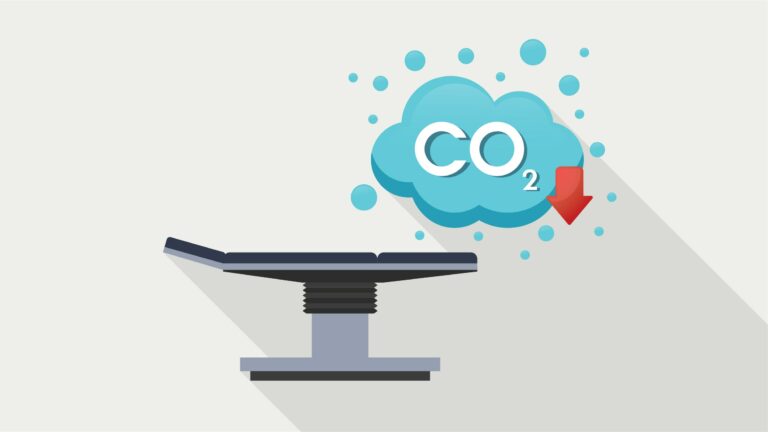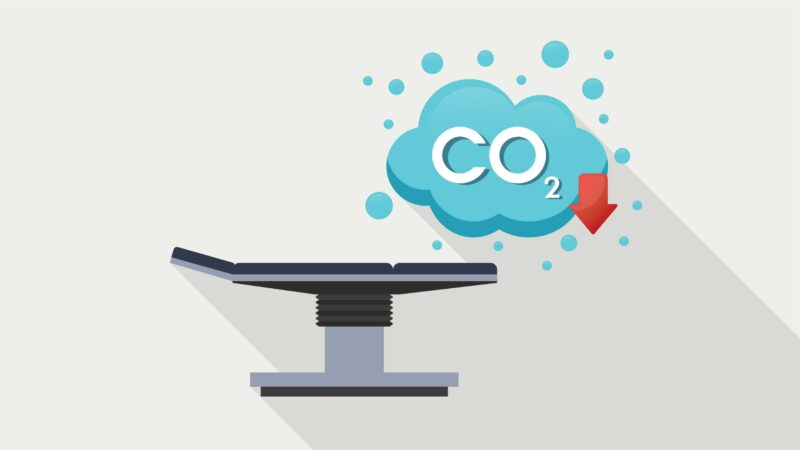

Eastern Health is seeking a technology solution that can remove CO2 from anesthetic circuits while maintaining the safe and reliable delivery of general anesthesia and reducing environmental impact.
Eastern Health is posting this Call for Innovation to seek out qualified Atlantic-based* companies who can meet the desired outcomes. Eastern Health and CAN Health reserves the right to not move forward with this project at its full discretion and in particular if there are no qualified Atlantic-based companies that can reasonably meet the desired outcomes.
*Business must be registered in either Nova Scotia, New Brunswick, Newfoundland &Labrador or Prince Edward Island in order to qualify for this project.
The use of CO2 chemical absorbents to remove CO2from anesthetic circuits can introduce both machine-side moisture and dust into the anesthesia delivery system which can lead to operating and reliability issues and increase the need for general maintenance. Any downtime of anesthesia machines can delay surgical procedures. In addition, CO2chemical absorbents can react with anesthetic vapors under certain conditions and create harmful byproducts. Due to this possibility, it is not safe to use lower fresh gas flows during anesthesia delivery. Lastly, CO2 chemical absorbents need to be frequently replaced, increasing the need for the transport, handling and storage of these absorbers and the quantity sent to landfill for disposal.
Eastern Health is seeking a technology solution that can remove CO2 from anesthetic circuits while maintaining the safe and reliable delivery of general anesthesia and reducing environmental impact.
Objectives:
- Improve anesthesia machine functioning by eliminating moisture and dust, reducing the need for general maintenance.
- Incur cost-savings by reducing the frequency of the need to replace CO2 absorbers and the associated transport/storage costs and by utilizing less fresh gas supply.
- Reduce environmental impact by decreasing the amount of waste sent to landfill and reducing greenhouse gas emissions.
Essential (mandatory) outcomes
The proposed solution must:
- Eliminate moisture and dust from anesthesia machines leading to:
- Reduced operating and reliability issues related to the function of anesthesia machine flow sensors, circuit valves, gas sampling lines and gas concentration sensors.
- Reduced anesthesia machine maintenance.
- Reduced anesthesia machine downtime.
- Improved anesthesia machine functioning.
- Eliminate any concern related to the creation or build-up of by-products such as carbon monoxide, formaldehyde and compounds A-G created from the reaction of anesthetic vapours and CO2chemical absorbers.
- Generate cost-savings by:
- Reducing the frequency needed to replace CO2absorbers;
- Reducing costs to transport, handle, and store of absorbers;
- Utilizing less fresh gas supplies.
- Reduce negative environmental impacts of anesthesia machines by reducing waste sent to landfill and reducing anesthesia vapor released into the atmosphere.
- Be compatible for use with GE anesthesia machines.
Additional outcomes
- Agnostic to anesthesia machine type.
The maximum duration for a project resulting from this Challenge is: 6 months
Anesthesia delivery systems are heavily utilized in healthcare organizations, however, machine-side moisture and dust resulting from CO2 chemical absorbents increases operating and reliability issues related to the function of anesthesia machine flow sensors, circuit valves, gas sampling lines and gas concentration sensors. Rather than CO2 absorption via a chemical reaction, the utilization of technology to separate CO2 emissions from anesthesia delivery systems could improve efficiencies and patient safety, as well as decrease general maintenance and downtime of anesthesia machines. Furthermore, a decrease in landfill waste and greenhouse gas emissions can be achieved through the elimination of disposable CO2 chemical absorbers and reduced anesthesia vapor released in the atmosphere.

